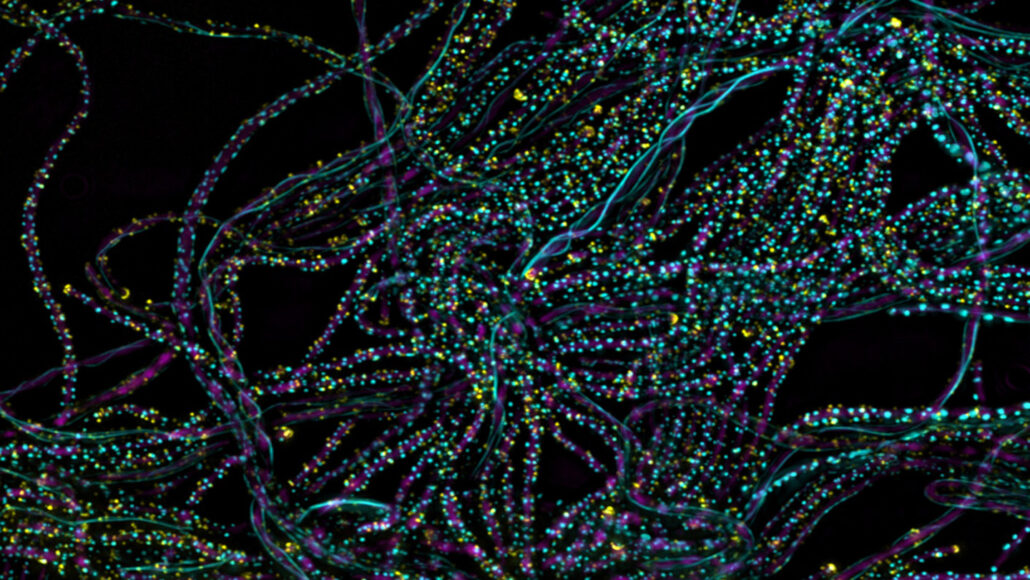A single particle of light can kick off photosynthesis
A new experiment with bacteria that perform photosynthesis showed the power of a lone photon

Rhodobacter sphaeroides (pictured) is a type of bacteria that performs photosynthesis. This process of turning light into energy is kicked off by a single particle of light, new experiments show.
Argonne National Laboratory (CC BY-NC-SA 2.0)
Share this:
- Share via email (Opens in new window) Email
- Click to share on Facebook (Opens in new window) Facebook
- Click to share on X (Opens in new window) X
- Click to share on Pinterest (Opens in new window) Pinterest
- Click to share on Reddit (Opens in new window) Reddit
- Share to Google Classroom (Opens in new window) Google Classroom
- Click to print (Opens in new window) Print
For photosynthesis, one photon is all it takes.
Plants, algae and some bacteria perform photosynthesis. This chain of chemical reactions lets them transform sunlight into energy that they can use to grow. At the smallest scales, light is made up of particles called photons. Scientists long suspected that a single photon could spark photosynthesis. Until now, no one knew for sure.
The new experiment used a light source that produces just two photons at a time. One photon flew off to a detector. This particle signaled when the two photons had been released. The second photon went into a solution that contained light-absorbing structures from a bacterium. This species (Rhodobacter sphaeroides) can photosynthesize. It has light-harvesting structures called LH2. Each LH2 contains two rings of molecules.
In normal photosynthesis, LH2 absorbs a photon and then passes its energy to a series of other groups of molecules. Eventually the energy is turned into a form of chemical energy. That energy fuels the microbe.
But in the new experiment, there was nothing to hand that energy off to. So when LH2 absorbed the second photon shot out by the light source, it gave off a third photon. This photon had a different wavelength (light hue) than the one LH2 had absorbed. The new wavelength was a sign that energy had passed from the first ring of LH2 to the second. And that’s step one of photosynthesis.
The researchers detected the photon given off by LH2. Then they compared the timing of its detection to when they detected the first photon spit out by their light source. This comparison confirmed the second photon had kicked off photosynthesis.
Researchers shared their findings June 14 in Nature.
Plants and bacteria do photosynthesis differently. In plants, multiple photons must be absorbed independently to complete photosynthesis. But the first steps in the process are similar enough that a single photon would set off photosynthesis in plants too, says Graham Fleming. This chemical physicist works at the University of California, Berkeley. He took part in the new research.
The role of single photons isn’t surprising, says Richard Cogdell. He’s a biochemist who did not take part in the tests. He works in Scotland at the University of Glasgow. The important thing here, he says, is the technique that Fleming’s team used.
Many similar experiments have relied on light from lasers. But lasers shine much denser beams of photons than sunlight. In real life, photons rain down on the molecules that do photosynthesis in plants and bacteria at a much lower rate. Just a few tens of light particles with the right wavelengths hit these small areas each second.
Using only a single photon in the lab more closely mimics that real-world process. “You can really work out what’s happening in the early reactions in photosynthesis,” says Cogdell. It’s as if “you could shrink yourself down and watch these photons moving around.”







